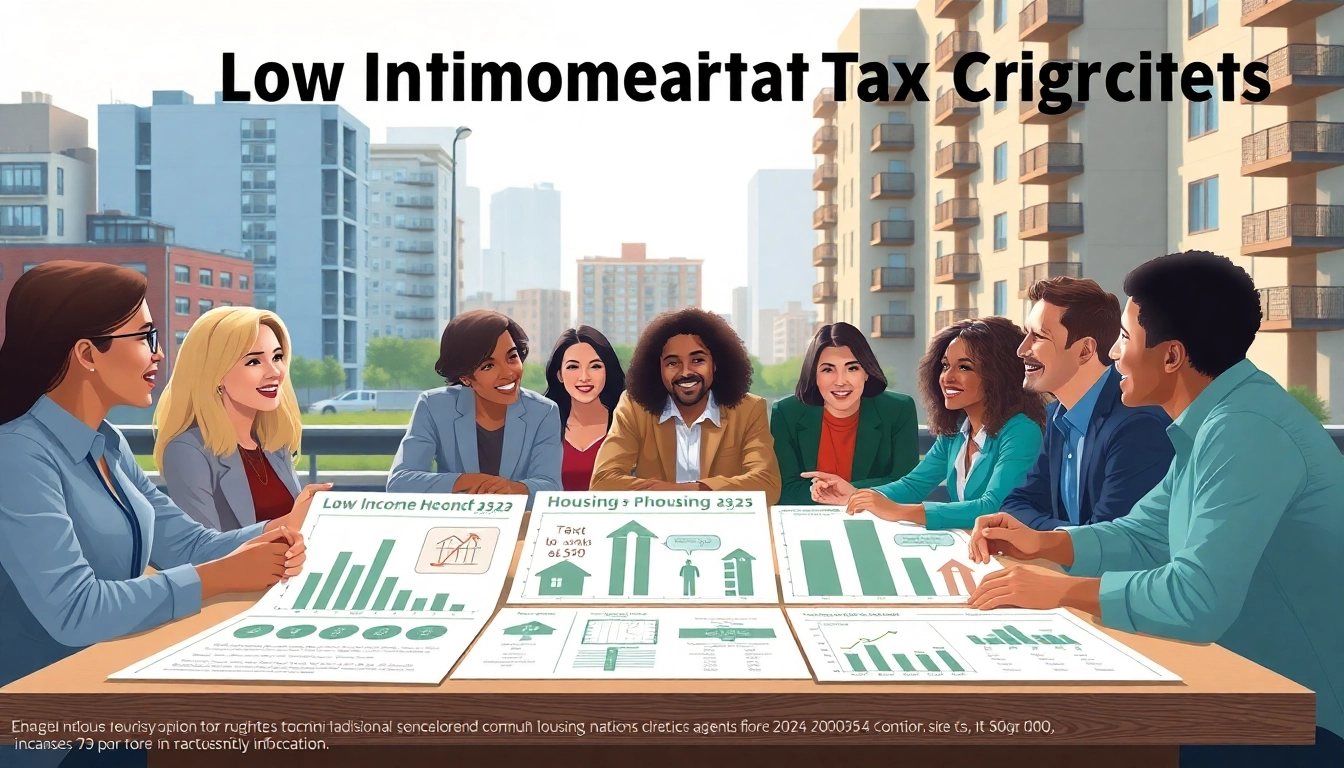The Importance of Low Income Housing Tax Credits
The Low Income Housing Tax Credits (LIHTC) play a crucial role in subsidizing the availability of affordable housing across the United States. Established through the Tax Reform Act of 1986, this program has become the most significant source for creating and preserving affordable housing for low-income individuals and families. It incentivizes private investors to fund the development of rental housing for households earning below the area’s median income, ultimately enriching communities by broadening access to necessary resources and supportive services.
Overview of the Low Income Housing Tax Credits Program
The LIHTC program provides tax credits to developers of affordable housing projects. These tax credits can be sold to raise equity for the project, significantly lowering the cost of development and making it financially feasible to build or rehabilitate properties that serve low-income residents. The program operates at both the federal and state levels, which helps ensure that affordable housing initiatives cater to local needs and conditions.
Investors may receive federal tax benefits over a 10-year period as long as the property maintains its affordability guidelines throughout that duration. Because of this, the LIHTC not only provides immediate financing but also supports long-term affordability for tenants.
Economic Impact of Low Income Housing Tax Credits
The economic implications of the LIHTC extend beyond just the provision of affordable housing. By encouraging investment in low-income areas, the program aids local economies through job creation, revitalization of neighborhoods, and the stimulation of local businesses. According to various studies, every dollar of LIHTC generates approximately $1.35 in additional economic activity in the community, impacting construction jobs and post-construction operations significantly.
Furthermore, the LIHTC has been pivotal in reducing homelessness and housing instability while bolstering the local tax base, as new housing developments contribute to increased municipal revenues through property taxes.
Benefits for Developers and Investors
For developers, the LIHTC program presents a robust financial incentive to invest in affordable housing. By providing tax credits that can offset federal tax liabilities, developers can attract additional equity, thereby reducing their reliance on debt financing. This enhances the overall feasibility of affordable housing developments, enabling them to compete with market-rate projects.
Investors also benefit from the worry-free return on investment provided by the program. With preset tax liabilities reduced through the acquisition of LIHTCs, investors can ensure reliable cash flow while also contributing to essential economic and social goals within their communities. This appealing mix of profit and purpose continues to attract a diverse range of financial stakeholders.
Eligibility Criteria for Low Income Housing Tax Credits
General Requirements for Participation
Participating in the LIHTC program involves meeting specific eligibility criteria, often dictated by both federal and state regulations. Generally, properties must be used as rental housing and meet various standards set forth by the housing authority in their respective locales. Furthermore, developers must submit a comprehensive application detailing how they will meet the program’s affordability requirements.
Income Limits and Calculation Methods
Eligibility for tenants living in LIHTC properties revolves around income limits, which are generally set at either 50% or 60% of the area’s median income, adjusted for family size. The method for calculating income varies, as it can include wages, salaries, tips, and other sources of income as defined by the Department of Housing and Urban Development (HUD).
It is vital for potential tenants to understand the qualifying income brackets, as overstating or misunderstanding their income can lead to disqualification. Public agencies typically provide resources and support during this process to ensure clarity and accessibility.
Property Types Eligible for Low Income Housing Tax Credits
The LIHTC program is designed to support various property types, including new construction, rehabilitation of existing properties, and certain types of acquisitions. This flexibility allows developers to take advantage of unique opportunities that arise in local housing markets. Common property types include:
- Multi-family apartments
- Mixed-use developments
- Single-family homes that are rented out
- Supportive housing for special populations (e.g., veterans, disabled residents)
Application Process for Low Income Housing Tax Credits
Steps to Apply for Tax Credits
The application process for acquiring Low Income Housing Tax Credits can be complex and often varies from state to state. Still, it generally follows these key steps:
- Initial Consultation: Engaging with state housing agencies early in the process for guidance on specific requirements and nuances.
- Prepare a Comprehensive Application: Developers will need to provide detailed project proposals, including site plans, financial models, and compliance strategies.
- Submit Applications: Typically done during an annual application round where proposals are evaluated based on set criteria, including project feasibility and community impact.
- Compliance Monitoring: Once awarded, developers must continually report on project progress and ensure compliance with affordability regulations.
Key Documentation Required
When applying for LIHTCs, developers must prepare several pieces of documentation to support their proposals. This includes:
- Feasibility Study: A thorough analysis of the projected costs versus income.
- Market Analysis: Data demonstrating the demand for affordable housing in the proposed location.
- Financial Statements: Documents showcasing the developer’s financial health and capacity to undertake the project.
- Proof of Site Control: Evidence that the developer has secured rights to the property where the development will take place.
Common Misconceptions About the Application
Many misunderstandings exist surrounding the LIHTC application process. Some common misconceptions include:
- Believing that only large developers are eligible – smaller projects can also receive LIHTCs through partnerships and joint ventures.
- Assuming that all applicants will receive funding – the competitive nature of the program means only those proposals that best meet housing needs will be awarded credits.
- Thinking that LIHTCs are free money – they are tax credits earned through compliance with specific regulations over many years.
Challenges and Considerations in Utilizing Low Income Housing Tax Credits
Pitfalls to Avoid When Applying
While the LIHTC program presents an invaluable opportunity for developers, several pitfalls are crucial to avoid for successful application:
- Lack of thorough market research can result in project failure if demand does not exist.
- Inadequate documentation or rushed applications lead to denial or delays in funding.
- Neglecting to engage with local stakeholders may lead to community pushback and limit the project’s overall success.
Regulatory Changes Impacting Low Income Housing Tax Credits
The LIHTC program is subject to regulatory changes both at the federal level and within state authorities. Staying informed about any proposed legislative shifts is essential for developers to ensure compliance and avoid financial setbacks. Over the years, the program has seen various adjustments aimed at increasing its efficiency and outreach, such as the expansion of eligible populations and increased allocation amounts in specific areas.
Strategies to Maximize Benefits
To maximize the benefits of the LIHTC program, developers should consider:
- Building strong partnerships with local organizations to enhance project acceptance and garner additional support.
- Employing effective management practices to maintain compliance and ensure sustained affordability.
- Utilizing technology and data to streamline operations and track performance metrics for continuous improvement.
Success Stories and Case Studies of Low Income Housing Tax Credits
Examples of Successful Projects Using Tax Credits
Numerous successful projects have utilized LIHTCs to create viable affordable housing solutions. One noteworthy example is the redevelopment of previously distressed properties into sustainable housing developments. Through thoughtful design, community partnerships, and adherence to program guidelines, these projects have provided safe, quality housing for families in need while stimulating local economies.
Community Benefits from Housing Developments
Communities that experience the positive impact of LIHTC developments often show a revival of local business activity and an increase in community engagement. The infusion of residents into these neighborhoods leads to greater demands for services and amenities, thereby fostering economic vitality and social cohesion.
Lessons Learned from Implementing Low Income Housing Tax Credits
Through the implementation of LIHTC projects, several important lessons have emerged, including the necessity of comprehensive planning, the value of ongoing community collaboration, and the impact of adaptive management practices. These lessons are essential in developing future projects that aim to enhance the effectiveness and efficiency of affordable housing provisions.


